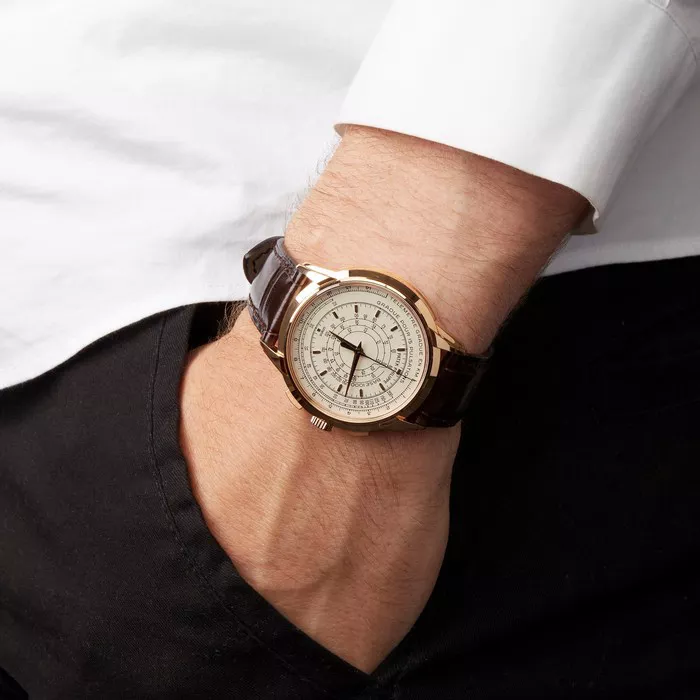In the realm of horology, Patek Philippe and Rolex stand as titans, revered for their precision, craftsmanship, and undeniable status symbols. For those with an affinity for luxury timepieces, the question often arises: Is Patek Philippe more expensive than Rolex? In this article, we embark on a detailed exploration of these two horological giants, dissecting factors that contribute to their prices, unraveling the intricacies of their histories, and examining the zeitgeist that shapes their perceived value in contemporary times.
The Legacy and Heritage: Patek Philippe vs. Rolex
To understand the price dynamics, one must delve into the storied pasts of Patek Philippe and Rolex. Patek Philippe, founded in 1839 in Geneva, Switzerland, boasts a legacy steeped in tradition and innovation. The brand is renowned for its limited production and commitment to exclusivity, producing some of the most complicated mechanical watches ever made.
On the other hand, Rolex, established in 1905, has earned a reputation for pioneering the development of the wristwatch. Rolex watches are synonymous with durability and precision, often favored by adventurers and explorers for their reliability in extreme conditions. The historical context of these brands contributes significantly to the perceived value of their timepieces.
Craftsmanship and Materials: The Art of Timekeeping
The craftsmanship and materials used in the production of luxury watches play a pivotal role in determining their price points. Patek Philippe, often referred to as the “watchmaker’s watchmaker,” is revered for its meticulous attention to detail and handcrafted excellence. The brand is known for producing movements, including intricate complications, entirely in-house.
Rolex, on the other hand, is celebrated for its innovative use of materials and the iconic Oyster case, which revolutionized water resistance. The brand has a reputation for creating robust, reliable watches suitable for everyday wear. While both brands uphold high standards of craftsmanship, Patek Philippe’s emphasis on hand-finishing and artisanal techniques may contribute to the higher costs associated with its watches.
Limited Production and Exclusivity: The Rarity Factor
One of the driving forces behind the perceived value of luxury watches is their scarcity. Patek Philippe, consistent with its commitment to exclusivity, limits its production numbers, creating an air of rarity around each timepiece. This scarcity not only enhances the desirability of Patek Philippe watches but also adds to their mystique.
Rolex, although producing more watches annually than Patek Philippe, strategically controls its output to maintain an air of exclusivity. Limited editions, special releases, and the famed waiting lists for certain models contribute to the perception that a Rolex watch is a coveted and rare possession.
Iconic Models and Cultural Influence: A Tale of Two Legends
The popularity and cultural influence of specific models can significantly impact the prices of luxury watches. Patek Philippe’s Nautilus and Calatrava collections, along with iconic models like the perpetual calendar Reference 1518, have become legendary in horological circles. The cultural cachet of Patek Philippe is exemplified by the famous advertising tagline, “You never actually own a Patek Philippe. You merely look after it for the next generation.”
Rolex, with its Submariner, Daytona, and GMT-Master collections, has ingrained itself in popular culture. These watches are not just timepieces but symbols of achievement and status. The association with explorers, athletes, and celebrities adds a layer of desirability to Rolex watches that transcends their functionality.
The Role of Innovation and Technology: Precision vs. Practicality
In the perpetual quest for precision and functionality, both Patek Philippe and Rolex have embraced technological advancements. Patek Philippe’s dedication to traditional watchmaking methods, combined with a willingness to incorporate cutting-edge technology in its movements, reflects a commitment to uncompromising precision.
Rolex, with its patented innovations like the Oyster Perpetual movement and the Cerachrom ceramic bezel, showcases a balance between tradition and technological progress. The brand’s focus on creating robust, reliable movements that require minimal maintenance adds a practical dimension to its luxury watches.
Perception in the Modern Era: A Status Symbol or Investment?
As we navigate the complexities of luxury watch pricing, it is crucial to examine how the perception of these timepieces has evolved in the modern era. Owning a Patek Philippe or Rolex is not merely about telling time; it is a statement of taste, achievement, and, in some cases, investment.
Patek Philippe’s emphasis on heritage, craftsmanship, and limited production positions its watches as heirlooms, passed down through generations. The emotional and sentimental value associated with a Patek Philippe watch often transcends its monetary worth, creating a unique position in the world of luxury.
Rolex, with its strong brand image and association with success, remains a coveted status symbol. While certain Rolex models appreciate value over time, the brand’s enduring popularity ensures that a Rolex watch is not just an accessory but a reflection of one’s accomplishments.
Conclusion: Navigating the Horological Landscape
In the timeless debate of Patek Philippe vs. Rolex, the question of which is more expensive is nuanced and multifaceted. Patek Philippe, with its emphasis on heritage, handcrafted excellence, and exclusivity, commands high prices that reflect the brand’s commitment to uncompromising quality.
Rolex, known for its durability, innovation, and cultural influence, offers a more varied pricing spectrum. While some Rolex models compete directly with Patek Philippe in terms of price, others remain more accessible, allowing a broader audience to partake in the luxury watch experience.
Ultimately, whether Patek Philippe is more expensive than Rolex depends on the specific models being compared and the criteria one values in a luxury timepiece. Both brands have carved a distinct niche in the horological landscape, shaping the perception of what it means to wear a watch of true distinction and craftsmanship. As the world of luxury watches continues to evolve, the allure of Patek Philippe and Rolex will undoubtedly endure, captivating enthusiasts and collectors alike with the magic of timeless timekeeping.


